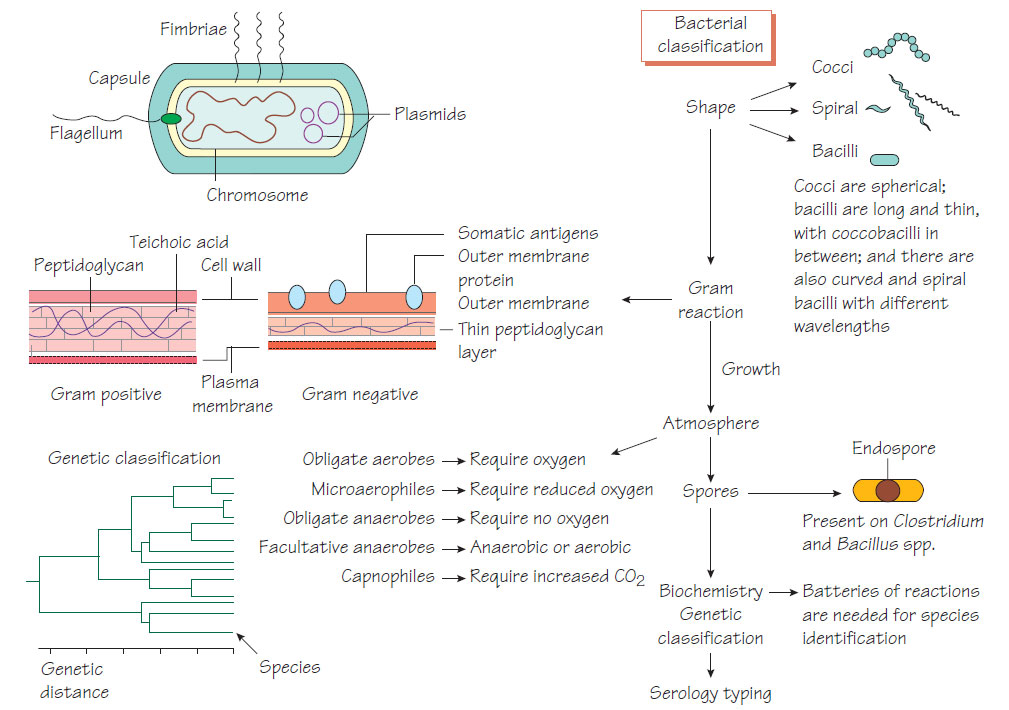Innate immunity and normal flora
The innate immune system, which consists of the normal flora, physical barriers such as the skin, antibacterial proteins and phagocytic cells, is an important defence mechanism against infection. Many responses to 'harm' are detected by pattern recognition molecules such as the Toll-like receptors (TLRs), which trigger cascades that activate phagocytes and the immune response. For example, TLR-4 recognizes lipopolysaccharide and TLR-9 recognizes unmethylated CpG dinucleotides. The main components of the system are listed in the Table. Variation in the expression/ composition of each component affects an individual's resistance to infection.Bacterial cells forming part of the normal flora outnumber human cells in the body. The normal flora provides protection by competing with pathogens for colonization sites and producing antibiotic substances (bacteriocins) that suppress other bacteria. Anaerobic bacteria produce toxic metabolic products and free fatty acids that inhibit other organisms. In the female genital tract lactobacilli produce lactic acid that lowers the pH, so preventing colonization by pathogens.
Antibiotics suppress normal flora, which allows colonization and infection by naturally resistant organisms, such as Candida albicans. The infective dose of Salmonella typhi is lowered by concomitant antibiotic use. Antibiotics may upset the balance between organisms of the normal flora, allowing one to proliferate disproportionately, for example Clostridium difficile, which results in a severe diarrhoeal disease (see Clostridium).
The skin provides a physical barrier, with secreted sebum and fatty acids inhibiting bacterial growth. Many pathogens can penetrate the skin, either via the bite of a vector (e.g. Aedes aegypti that transmits dengue) or by invasion through intact skin (e.g. Leptospira and Treponema). Some organisms colonize mucosal surfaces and use this route to gain access to the body (e.g. Streptococcus pneumoniae).
If skin integrity is broken by intravenous cannulation or by medical or non-medical injection, blood-borne viruses, such as hepatitis B or the human immunodeficiency virus (HIV), can be transmitted. Diseases of the skin, such as eczema or burns, permit colonization and invasion by pathogens (e.g. Streptococcus pyogenes).
| The innate immune system: the location of barriers to infection, the mechanisms and consequences of deficiency. | ||||
| Component | Compromise | Consequence | ||
| Normal flora | ||||
| Pharynx | Antibiotics | Oral thrush | ||
| Intestine | Antibiotics | Pseudomembranous colitis; colonization with antibiotic-resistant organisms | ||
| Vagina | Antibiotics | Vaginal thrush | ||
| Skin | Burns, vectors | Cutaneous bacterial infection, infection with pathogenic viruses, bacteria, protozoa and metazoa | ||
| Turbinates and mucociliary clearance | Kartagener’s syndrome, cystic fibrosis, bronchiectasis | Chronic bacterial infection | ||
| Lysozyme in tears | Sjögren’s syndrome | Ocular infection | ||
| Urinary flushing | Obstruction | Recurrent urinary infection | ||
| Phagocytes, neutrophils, macrophages | Congenital, iatrogenic, infective | Chronic pyogenic infection, increased susceptibility to bacterial infection | ||
| Complement | Congenital deficiency | Increased susceptibility to bacterial infection, especially Neisseria and Streptococcus pneumoniae | ||
Gastric acid protects from intestinal pathogens - acid suppression increases the risk of intestinal infection.
Urinary f?lushing protects the urinary tract, with the flushing action of urinary flow keeping the tract sterile, except near the urethral meatus. Obstruction by stones or tumours, benign prostatic hypertrophy or scarring of the urethra or bladder may cause a reduction of urinary flow and stasis, increasing the risks of subsequent bacterial urinary infection.
Neutrophils and macrophages ingest particles, including bacteria, viruses and fungi. Opsonins (e.g. complement and antibody) may enhance phagocytic ability; for example, S. pneumoniae are not phagocytosed unless their capsule is coated with an anticapsular antibody. The action of macrophages in the reticuloendothelial system is essential for resistance to many bacterial and protozoan pathogens, such as S. pneumoniae and malaria. Congenital deficiency of neutrophil function leads to chronic pyogenic infections, recurrent chest infections and bronchiectasis. Following splenectomy, patients have defective macrophage function and diminished ability to remove capsulate organisms from the blood.
Complement is a system of plasma proteins that collaborate to resist bacterial infection, which is activated by antigen-antibody binding (the classical pathway) or by direct interaction with bacterial cell wall components (the alternative pathway). The products of both processes attract phagocytes to the site of infection (chemotaxis), activate phagocytes, cause vasodilatation and stimulate phagocytosis of bacteria (opsonization). The final three components of the cascade form a 'membrane attack complex' that can lyse Gram-negative bacteria. Complement deficiencies render patients susceptible to acute pyogenic infections, especially with Neisseria meningitidis, Neisseria gonorrhoeae and S. pneumoniae.
Transferrin captures iron, which limits the amount available to invading microorganisms. Other acute-phase proteins that are directly antibacterial include mannose-binding protein and C-reactive protein (CRP), which binds to bacteria and activates complement.





